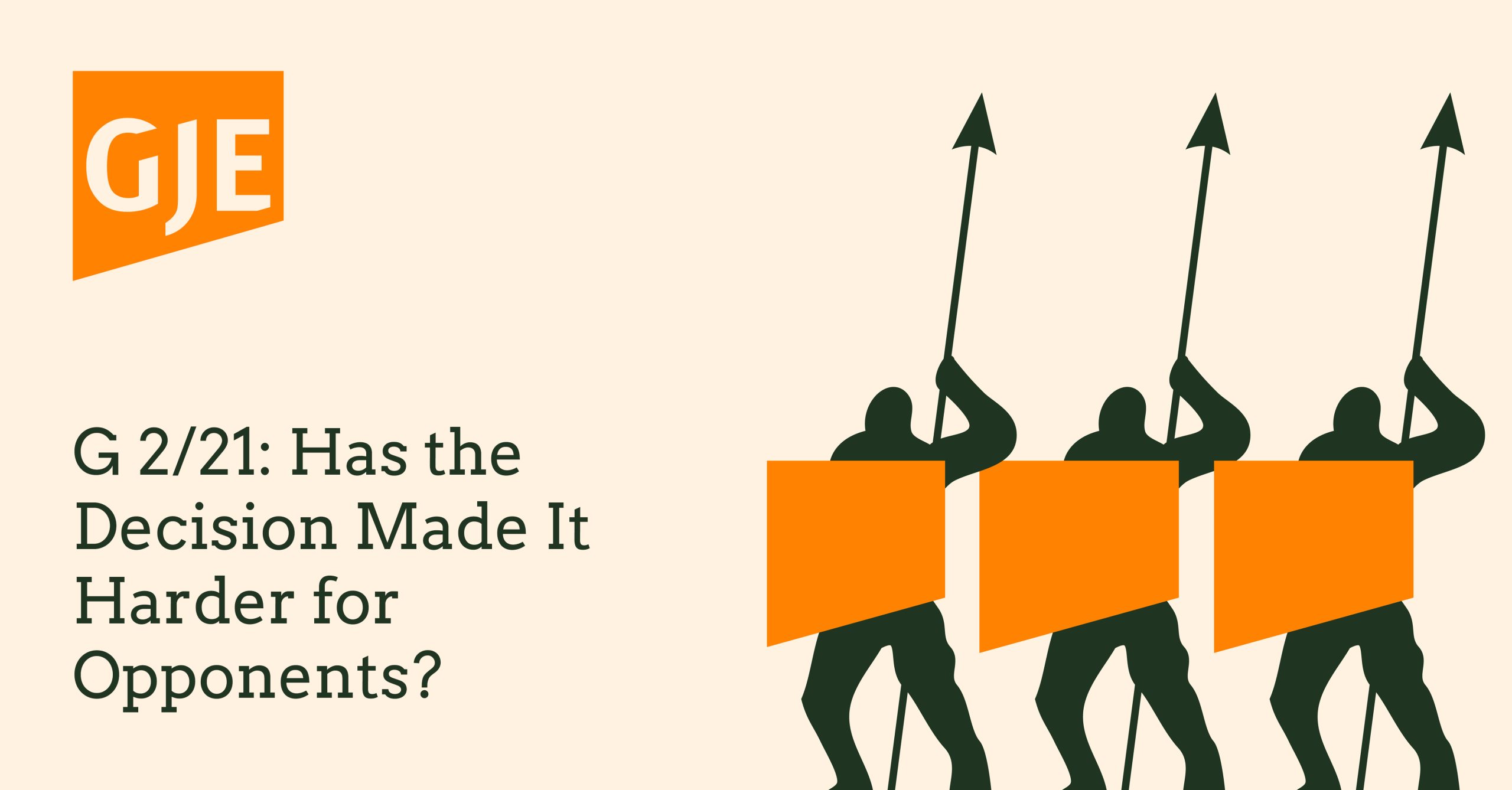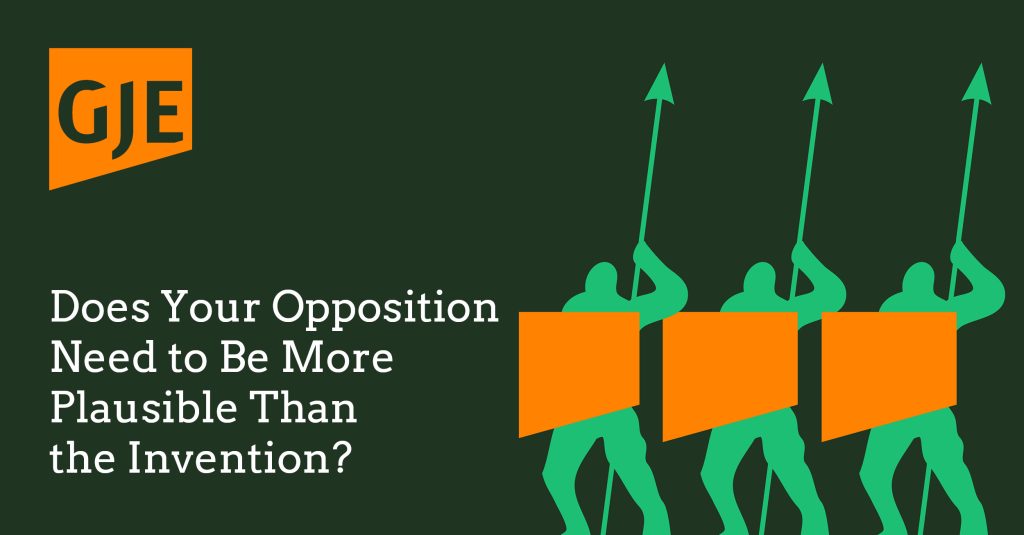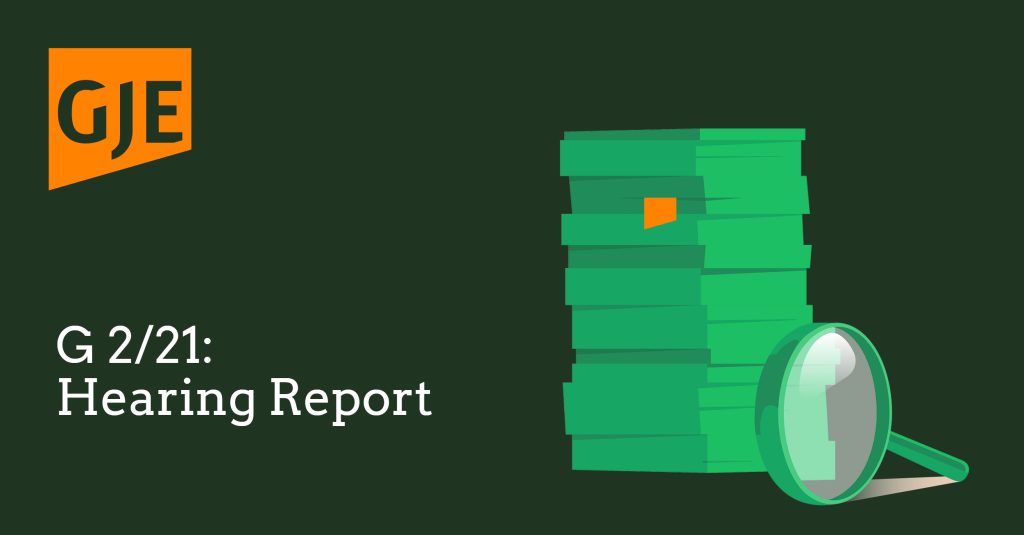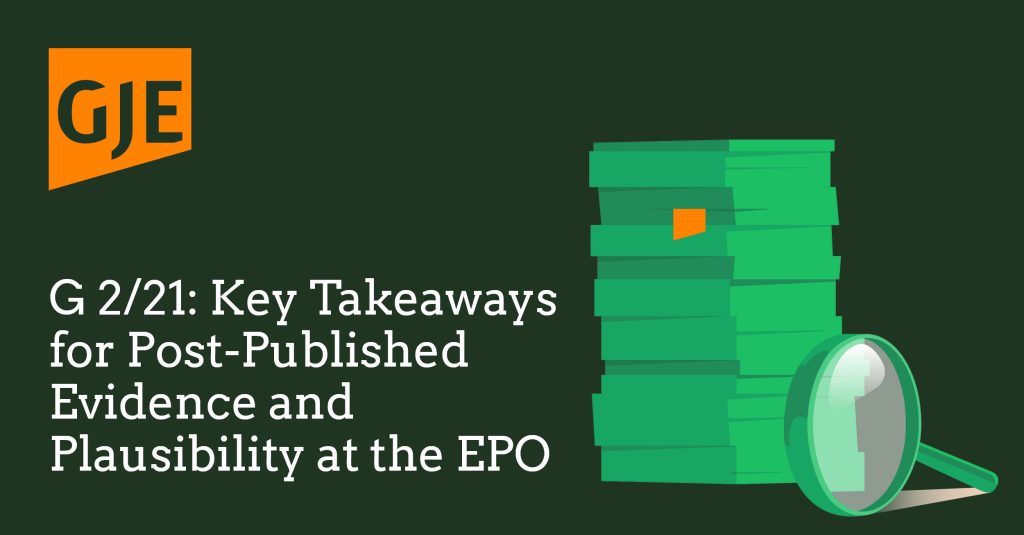
A little over two months ago, Arnie Clarke speculated what the Enlarged Board of Appeal’s G 2/21 “plausibility” decision might mean for opponents of European patents. Two months on, the decision has been published, and he considers whether anything has actually changed.
Compared to the preliminary opinion of the Enlarged Board, it appears that there is cause for at least a small celebration – not only has the traditional plausibility bar not been universally lowered, but it appears that the equivalent bar for the assessment of sufficiency of disclosure remains relatively high, at least in respect of certain technologies and claim types.
I hesitate to provide a reminder of the three questions referred to the Enlarged Board of Appeal as it refused to answer two of them, at least in a specific or particularly helpful way.
The relatively uncontroversial first question, regarding whether post-published evidence could be used to support a technical effect, was predictably answered in the affirmative: the principle of free evaluation of evidence is universal, and no exception was provided in the decision.
So far, all clear. But then things started to get murky. Following the question to answer 1, what the patent world was really looking for was some guidance on the conditions under which such post-published evidence would be considered relevant. What followed was a presentation of the diverging strands of case law, a denial that there was any divergence between these strands, and an eschewal of the word “plausibility”.
At least the Enlarged Board was aware of its fence-sitting and referred to “the abstractness” of the criteria proposed in the decision. In this regard we were presented with some “guiding principles” for the deciding bodies of the EPO to use when deciding whether post-published evidence may be relied upon:
A patent applicant or proprietor may rely upon a technical effect for inventive step if the skilled person, having the common general knowledge in mind, and based on the application as originally filed, would derive (consider) said effect as being encompassed by the technical teaching and embodied by the same originally disclosed invention. [emphasis added]
Self-evidently, this is not a straightforward answer to the actual questions that were referred to the Enlarged Board. This should be reassuring for opponents as the Enlarged Board seems to have tended away from its preliminary opinion, which suggested that it might adopt the ab initio implausibility standard. This would allow post-published evidence to be taken into consideration if the skilled person had no significant reason to doubt the technical effect.
What appears to have happened is that the Enlarged Board accepted that both the ab initio implausibility and ab initio plausibility standards could coexist, depending on the facts of the case. Prepare for an extra chapter in the Case Law Book of the Boards of Appeal …
In its reasoning, the Enlarged Board was apparently satisfied that the outcome in the lengthy list of case law would not have been different from the actual finding of the respective board of appeal had the guiding principles been applied. So, if both strands of the case law are consistent with the guiding principles, what does “encompassed by the technical teaching” and “embodied by the same originally disclosed invention” mean, and what will this mean for third parties challenging the validity of patents at the EPO?
What is clear is that the technical effect in the context of the problem and solution approach may be different from the technical effect originally put forward in the application. As such, opponents should initially focus on the “original” technical effect as it is set out in the application as filed, as compared to any “new” technical effect invoked by the comparison with the prior art. If the underlying technical effect can be undermined at this stage, the existence and content of post-published data can probably be ignored.
The “original” technical effect must be considered in light of the common general knowledge. Whether this makes it probable that the effect is achieved will depend on the technical field of the invention.
It is self-evident that, for some technologies, very little or no technical evidence will be required to render the technical effect probable. For example, a simple mechanical invention that follows the established principles of Newtonian mechanics will require little, if any, exemplification in the form of data. Once the skilled person is aware of the teaching of the invention, they should be able assess the likelihood of the technical effect being achieved without the need for experimentation or data.
On the other hand, some technologies depend on at least some experimental evidence to support an underlying technical effect. For example, in therapeutic medical technology, it is rarely possible to predict the pharmacological effects that a particular chemical will exert on the human or animal body. Likewise, the properties of a new alloy are often empirical, and some testing must be carried out in order to provide an indication of physical and chemical function.
For cases where the application of the guiding principles is not straightforward, this is likely to lead to the greater use of expert testimony. The determination of what the application actually teaches the skilled person, and the identification and interpretation of the common general knowledge will be critical in deciding whether the effect relied upon is encompassed by the technical teaching of the original application and embodied by the originally disclosed invention.
The various EPO departments that will have to interpret these guiding principles should not be left to their own devices in determining the common general knowledge. As the Enlarged Board goes to lengths to emphasize that the determination of the technical effect will be based on the facts, opponents should do their best to determine them, and to present an unflattering set of facts to the EPO. As the common general knowledge can be hard to determine using the means readily available to the departments of the EPO, it is a task better suited to technical experts.
Opponents will have to work hard to show what prior art cannot be relied on as common general knowledge by a patentee. On the other hand, the task of accurately identifying the common general knowledge, and picking and choosing one’s battles, may make a finding of obviousness more likely. Of course, this task will add cost to the proceedings, but in the experience of the author it is time and money well spent.
A small ray of light in the case law fug generated by the G 2/21 decision is that the Enlarged Board arguably endorsed the ab initio plausibility standard with respect to the assessment of sufficiency of disclosure. This is the question the Enlarged Board said it was not going to address but has proceeded to give arguably clearer guidance for compared to inventive step.
The Enlarged Board helpfully focusses on the existence of a therapeutic effect as the main area of dispute over the last few years. Reasons 77 of the decision state:
In order to meet the requirement that the disclosure of the invention be sufficiently clear and complete for it to be carried out by the person skilled in the art, the proof of a claimed therapeutic effect has to be provided in the application as filed, in particular if, in the absence of experimental data in the application as filed, it would not be credible to the skilled person that the therapeutic effect is achieved. A lack in this respect cannot be remedied by post-published evidence.
This suggests that an attack under Article 83 EPC will remain a potent weapon against unsupported therapeutic use claims.
Conclusions
It appears that little has changed in light of the G 2/21 decision. Opponents and patentees will inevitably spend years debating the meaning of the guiding principles, particularly the terms “encompassed by” and “embodied by”. Patentees will continue to propose the application of the ab initio implausibility approach, while opponents will advance the opposite. This will add a few paragraphs to oppositions, opposition defences and appeals, but the specific arguments will probably remain the same, and the underlying Technical Board of Appeal case law will probably be cited more often than G 2/21 itself.
Next steps
Please connect with us on LinkedIn here and sign up here to receive further G 2/21-related news and insights. In the meantime, please contact Arnie Clarke if you would like to discuss the potential relevance of G 2/21 and plausibility to your business.


